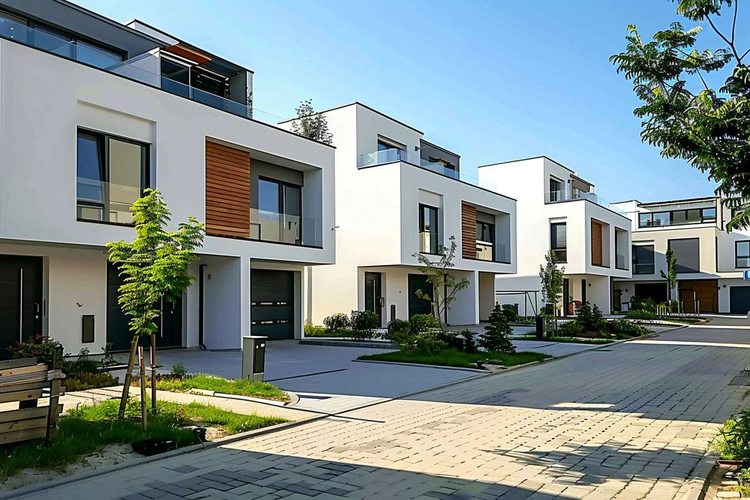Title: The Quiet Revolution of Adaptive Reuse in Commercial Real Estate
In the ever-evolving landscape of commercial real estate, a new trend is quietly reshaping urban spaces and redefining property value. Adaptive reuse, the practice of repurposing existing buildings for new functions, is gaining momentum as a sustainable and innovative approach to real estate development. This strategy not only breathes new life into aging structures but also offers unique investment opportunities and addresses pressing urban challenges.

The practice encompasses a wide range of transformations, from converting warehouses into trendy office spaces to reimagining defunct shopping malls as mixed-use community hubs. What sets adaptive reuse apart is its focus on preserving the character and structural integrity of existing buildings while adapting them to meet contemporary needs and standards.
The Economic Case for Adaptive Reuse
From a financial perspective, adaptive reuse can offer significant advantages over traditional new construction. While initial costs may vary depending on the condition of the original structure, adaptive reuse projects often benefit from reduced material costs, shorter construction timelines, and potential tax incentives for historic preservation.
Moreover, these projects can command premium rents due to their unique character and often prime locations. The blend of historical charm with modern amenities creates a compelling value proposition for tenants and buyers alike. This economic potential has caught the attention of savvy investors and developers looking to capitalize on underutilized urban assets.
Sustainability and Environmental Impact
One of the most compelling arguments for adaptive reuse is its positive environmental impact. The construction industry is a significant contributor to global carbon emissions, and the embodied energy in existing buildings represents a substantial environmental investment. By repurposing these structures, developers can drastically reduce the carbon footprint associated with new construction.
Adaptive reuse projects typically require fewer new materials, generate less construction waste, and often incorporate energy-efficient upgrades that improve the overall sustainability of the building. This alignment with green building practices not only appeals to environmentally conscious tenants and investors but also positions properties favorably in markets with stringent sustainability regulations.
Challenges and Considerations
While the benefits of adaptive reuse are significant, the process is not without its challenges. Developers and investors must navigate complex zoning regulations, building codes, and sometimes historical preservation requirements. Older buildings may require extensive renovations to meet modern safety standards and accessibility requirements, which can impact project timelines and budgets.
Furthermore, unforeseen issues such as structural problems, hazardous materials, or outdated systems can emerge during the renovation process, adding complexity and cost to the project. Successful adaptive reuse requires a delicate balance between preserving the building’s character and meeting contemporary needs and regulations.
Market Trends and Future Outlook
The COVID-19 pandemic has accelerated certain trends that favor adaptive reuse. The shift towards remote work has left many office buildings underutilized, creating opportunities for conversion to residential or mixed-use spaces. Similarly, the decline of traditional retail has led to innovative repurposing of shopping centers and department stores.
Looking ahead, the adaptive reuse market is poised for continued growth. Urban planners and policymakers are increasingly recognizing its potential to address housing shortages, revitalize neighborhoods, and promote sustainable development. As cities grapple with the need to accommodate growing populations while preserving their architectural heritage, adaptive reuse offers a compelling solution.
Investment Strategies and Opportunities
For real estate investors, adaptive reuse presents unique opportunities and challenges. Success in this niche requires a keen eye for potential, a deep understanding of local market dynamics, and the ability to navigate complex regulatory environments. Some key strategies for investors include:
-
Identifying undervalued properties in prime locations with potential for repurposing.
-
Partnering with experienced architects and contractors who specialize in adaptive reuse projects.
-
Leveraging tax incentives and grants available for historic preservation and sustainable development.
-
Focusing on flexible designs that can adapt to changing market demands over time.
Investors should also be prepared for potentially longer holding periods, as the full value of adaptive reuse projects may take time to materialize. However, the unique character and sustainability features of these properties can offer a competitive edge in attracting tenants and buyers, potentially leading to stronger long-term returns.
Conclusion
Adaptive reuse represents a significant shift in the commercial real estate landscape, offering a blend of historical preservation, sustainability, and economic opportunity. As cities continue to evolve and face new challenges, the ability to reimagine and repurpose existing structures will become increasingly valuable.
For investors, developers, and urban planners, adaptive reuse offers a pathway to create vibrant, sustainable spaces that meet the needs of modern communities while honoring architectural heritage. As this trend continues to gain momentum, it promises to reshape our urban environments and redefine the concept of value in commercial real estate.





